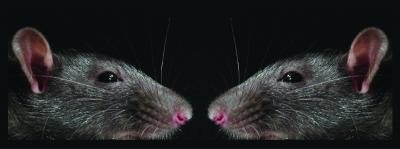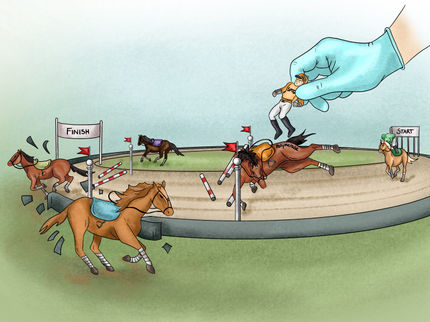Scientists show how DNA unfolds for transcription
The human genome contains some 3 billion base pairs that are tightly compacted into the nucleus of each cell. If a DNA strand were the thickness of a human hair, the entire human genome would be crammed into a space the size of a softball, but if it were unraveled and all the strands lined up, they would stretch from Ithaca, N.Y., to Boston.
A Cornell study, published in Molecular Cell, teases out how cells undergo transcription, where compacted DNA unravels, and a complex enzyme called RNA polymerase II reads the desired gene's DNA base pairs and transcribes them into RNA. The RNA then instructs the cell to make specific proteins based on a gene's blueprint.
In particular, the researchers expand on their previous work that showed that the unraveling of compacted DNA occurs independently of transcription by RNA polymerase II. Many scientists previously believed that RNA polymerase II played a major role in decompacting the DNA.
"The process by which nucleosomes become decompacted - especially during transcription - hadn't been well characterized until the last decade," said Steven Petesch, the paper's lead author and a graduate student in the lab of John Lis, the paper's senior author and the Barbara McClintock Professor of Molecular Biology and Genetics at Cornell. "If you want to understand how basic processes like transcription occur, then you need to understand the steps that facilitate that process," Petesch added.
To tease out such processes, Petesch and Lis used heat shock genes from fruit flies, which become activated when temperatures rise above a threshold, such as during hot days for fruit flies or when people get fevers. The genes, which are found in many organisms, initiate processes that protect cells from damage. By applying heat, the researchers were able to jump-start within seconds the unfolding of DNA and the transcription of heat shock genes.
When the temperature rises, a protein called a heat shock factor facilitates the steps necessary for transcription to occur. Among other things, Petesch and Lis found that heat shock factor binds to the heat shock genes and activates processes involving key enzymes that ultimately cause the enzyme Poly(ADP-ribose) polymerase (PARP) to locally produce Poly(ADP-Ribose) (PAR), a long polymer similar to DNA and RNA.
When DNA is compacted, strands wrap tightly around proteins called histones, like thread wrapped around a spool, to create packets of nucleosomes. But, it turns out, PAR competes with DNA for binding of histone proteins, which helps them unwrap from their spools and decompact. The researchers found that within seconds of increasing temperatures, heat shock factor is recruited to start the process of modifying histones and the unfolding of the DNA before transcription occurs.
"This process is completely independent of RNA Polymerase II transcribing through the gene," said Petesch. Lis added, "However, this process is completely dependent on heat shock factor and PARP's ability to make PAR chains, which are necessary to rapidly remove nucleosomes and unravel the induced gene."
Most read news
Organizations
Other news from the department science

Get the life science industry in your inbox
By submitting this form you agree that LUMITOS AG will send you the newsletter(s) selected above by email. Your data will not be passed on to third parties. Your data will be stored and processed in accordance with our data protection regulations. LUMITOS may contact you by email for the purpose of advertising or market and opinion surveys. You can revoke your consent at any time without giving reasons to LUMITOS AG, Ernst-Augustin-Str. 2, 12489 Berlin, Germany or by e-mail at revoke@lumitos.com with effect for the future. In addition, each email contains a link to unsubscribe from the corresponding newsletter.
More news from our other portals
Last viewed contents
Agent clears toxic proteins and improves cognition in neurodegeneration models
Solving medical 'cold cases' through genetics

Sniff, sniff. What did you say?
Category:Glycoside_aglycones
HIV_tropism
List_of_beetle_species_recorded_in_Britain
Improvisation_in_music_therapy
Amorfix awarded "Life Science Company of the Year" for moving innovative products into commercialization
PregLem announces positivie phase III results from Esmya - PEARL I trial meets primary efficacy and safety endpoints
Genomes of identical twins reveal epigenetic changes that may play role in lupus























































